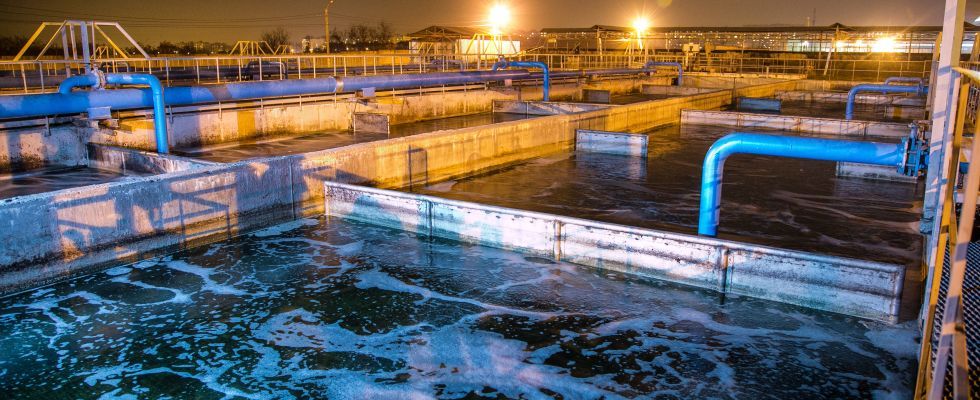
Members of the American Society of Civil Engineers – Iowa Section released the 2023 Report Card for Iowa’s Infrastructure during an event held at the Iowa State Capitol on April 11. Overall, the 13 categories of Iowa’s infrastructure assessed get a C grade, the same as the 2019 report card. Iowa’s overall grade is better than the national grade of C- from the 2021 Report Card for America’s Infrastructure. Nine of the 13 categories in the Iowa Report Card have better grades from the national assessment. The categories assessed in the report include: Aviation (C-), Bridges (D+), Dams (D), Drinking Water (C), Energy (C+), Inland Waterways (D+), Levees (C), Public Parks (C), Rail (C+), Roads (B-), Solid Waste (B-), Stormwater (D+), and Wastewater (C-).
“This report underscores the challenges and successes of Iowa’s infrastructure,” said Edward Sowder, PE, president of the American Society of Civil Engineers – Iowa Section,project engineer with Calhoun-Burns & Associates, West Des Moines. “Challenges include aging assets, inflation, supply chain woes, and a significant rural population, and extreme weather events - flooding in particular.”
Iowa’s report card highlights the age of Iowa’s infrastructure and investment needed to improve and maintain systems crucial for public health and safety. As of March 2023, the 2021 federal Infrastructure Investment and Jobs Act has provided $2.4 billion to Iowa, including $316 million for Missouri River navigation improvements. But money from that Bipartisan Infrastructure Law is temporary. Further state and local investment, plus policy changes and improved project delivery, are needed to ensure high performance of the Iowa’s infrastructure systems.
“Infrastructure investment means more jobs, safer communities, and more money in taxpayers’ wallets,” Sowder stated. “Iowa families and businesses cannot afford to underinvest in the systems that get us to and from work, send water directly to our faucets, and keep the lights on. We all pay a hidden tax for faulty infrastructure – the more we invest the less it costs us in the long run.”
The Report Card cites strides to improve transportation systems, including increasing gas and diesel taxes in 2015 as well as prioritizing maintenance and repairs over expansion projects. These policies, along with resources from the Infrastructure Investment and Jobs Act (IIJA), have kept Iowa’s systems afloat per the review. However, funding needs are so great these resources are not enough to drastically improve conditions. Roughly 19% of bridges in the state have a condition rating of “poor,” which is the second-highest percentage of any state in the country. Most of these fall under the purview of counties and cities, as only 30 of the 4,599 bridges listed in poor condition are state-owned. Road conditions tell a different story, though, as only 25% of the state’s roads are in poor or mediocre condition, compared to 40% nationally. The IIJA provides a 30% boost in highway related funding to help improve conditions.
The report also found that severe weather events are increasing in Iowa, and the systems that protect residents and property are aging and aren’t equipped to handle current and future rainfall trends, threatening residents’ safety and welfare. Iowa has had the most disaster declarations due to flooding over the past 70 years of any state, and rainfall and flooding has increased by 20% in the last century. This is overwhelming infrastructure systems and decimates agricultural output. Although sectors have taken steps to combat advanced rainfall patterns, more must be done to mitigate risks associated with climate disasters and flooding.
Looking forward, engineers working on Iowa’s report card offer key recommendations:
- Support funding enhancements for present and future needs: Iowa’s motor fuel tax is losing value to inflation. Iowa should modify motor fuel taxes to automatically rise with inflation and direct dedicated money to locally owned bridges. Decision-makers should also approve a sales tax increase supporting the Natural Resource and Outdoor Recreation Trust Fund. 63% of Iowans approve of the change delivering funds to $45 million worth of shovel-ready projects.
- Fortify water systems for greater resilience: Iowa sits between nationally important rivers with integral freight capacity, vital ecosystems, and powerful economic potential. From 1953 to 2018, Iowa had more disaster declarations due to flooding than any other state in the nation, a trend that’s likely to continue. Resilience can’t be addressed without greater investment in aging systems for wastewater, drinking water, stormwater, dams, and levees often under-capacity for treatment and conveyance.
- Foster inter-government and non-political organization for improved capacities: Project delivery capacity, data collection and use, and stakeholder inclusion can be improved when decision-making expands beyond traditional silos. Operational fortitude of Iowa's energy grid, for example, could improve if local communities participated more directly in renewable power generation and storage.
The American Society of Civil Engineers – Iowa Section was established in 1920. With over 900 like-minded individuals who are passionate about the field of civil engineering belonging, members say they are determined to make their world a better place through their service.

